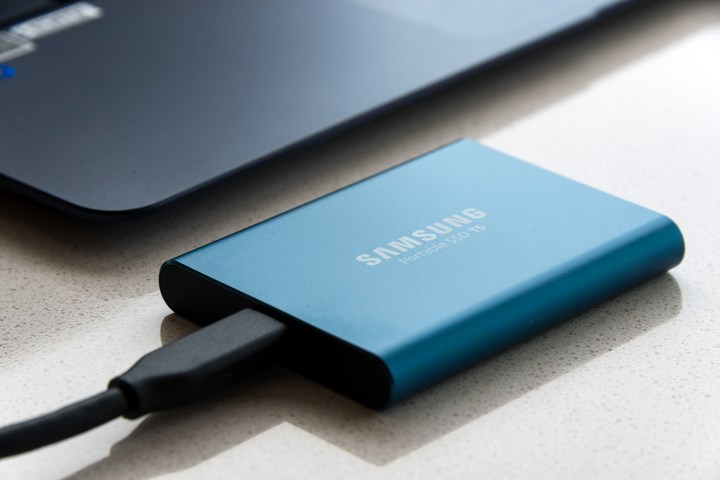
The Universal Serial Bus, or USB connector has been a mainstay of a wide range of devices for years, though the actual port used and cable required could vary dramatically. USB4 is changing that by adopting many of the best features of Intel’s Thunderbolt 3 standard. USB4 is faster, better equipped, and perhaps even more standardized across the industry than every type of USB that came before it.
Availability
USB4 was announced in March 2019, with a rough outline of its features and capabilities, and since then we’ve gotten a few USB4-powered devices like docking stations and high data transfer cables. Although we’re sure there will be a large and vibrant USB4 ecosystem in the future, at the moment there are not a ton of products you can buy that use the new technology.
Of course, to take advantage of USB4 devices, you’ll need a computer that has USB4, and at the moment the only computers that support USB4 are modern Apple desktops and laptops, as well as some Intel-based laptops and desktop motherboards. Some devices won’t mention support for USB4 but will mention Thunderbolt 4. If a port supports Thunderbolt 4, that means it’s USB4, but not all USB4 ports are
Although Ryzen 6000 mobile APUs support USB4, the firmware and software aren’t ready. However, AMD has released its first USB4 driver, which means those updates are probably coming very soon. Enabling USB4 on a Ryzen laptop requires the manufacturer to release a BIOS update and to also actually have physical USB4 ports on the laptop, so not every Ryzen 6000-based laptop will be receiving a USB4 update. Upcoming Ryzen 7000 desktop CPUs will also support USB4.
Performance

The most immediate benefit of USB4 is how much faster it is than its predecessors. Where the USB 3.2 2×2 specification can only transfer data at up 20 Gbps (gigabits per second), USB4 is capable of up to 40 Gbps. That’s also four times the speed of the far more common USB 3.1 (3.2 gen. 2) and eight times as fast as USB 3.0 (3.2 gen. 1). However, not all USB4 devices will transfer data at 40 Gbps; some device manufacturers can opt for 20 Gbps transfer speeds instead. Still, 20 Gbps is twice as fast as USB 3.1, which is typically the fastest USB port you can find.
The speed of USB4 also matches that of Thunderbolt 3 and 4, which is an important factor in the development and planned future for the USB standard.
Features
USB4 is built around the USB-C connector and is entirely reversible — no more flipping back and forth like you had to do with USB-A cables. It can also offer charging and power delivery up to 100 watts, so USB4 is perfectly capable of charging your laptop, or powering your monitor.
That combination of high data throughput and power delivery means it can act as a singular cable for displays. It can handle two 4K displays or one 5K display over a single connector. It also has enough data throughput to connect external graphics cards to desktops and laptops.
USB4 is backward compatible with USB 3.x, 2.x, and 1.x devices. You might just need to change the cable you connect those devices with.
Although not a feature for USB4 itself, one of its greatest improvements could be greater standardization. The USB Implementers Forum (USB-IF), the group that manages the promotion and marketing of USB, hopes that it can use the new USB generation to make the standard more uniform across devices. With a singular connection type in USB-C, there won’t be a wide array of potential cables or ports. The USB-IF will also create a standard feature list which it will push manufacturers to support with USB4 devices. That will be a stipulation of certification, although it will not be mandatory, and as an open standard, USB4 can be implemented by any manufacturer in any fashion they choose.
The name of USB4 is a big improvement over the extremely confusing naming conventions of its predecessor, but it’s not as clear as it could be. For example, lots of devices with USB4 support don’t say “USB4” but instead “Thunderbolt 4” without mentioning that
What about Thunderbolt?

USB4 is largely based on Thunderbolt 3, which is basically a special version of USB that has way more bandwidth than the normal version.
But USB4 doesn’t have to perform as well as Thunderbolt 3; manufacturers are allowed to only offer 2 of those PCIe lanes or 20 Gbps, which means support for
As it stands, USB4 support doesn’t guarantee compatibility with high-end Thunderbolt devices. That doesn’t mean USB4 is useless, it just means you’ll have to read the fine print to see whether or not a computer with USB4 but not
Editors' Recommendations
- Intel Battlemage graphics cards: release date speculation, price, specs, and more
- USB-C charging laptops: Here’s what you need to know
- What is Thunderbolt 5?
- Thunderbolt 4: everything you need to know
- MacBook Air 15-inch: price, release date, battery life, and more




